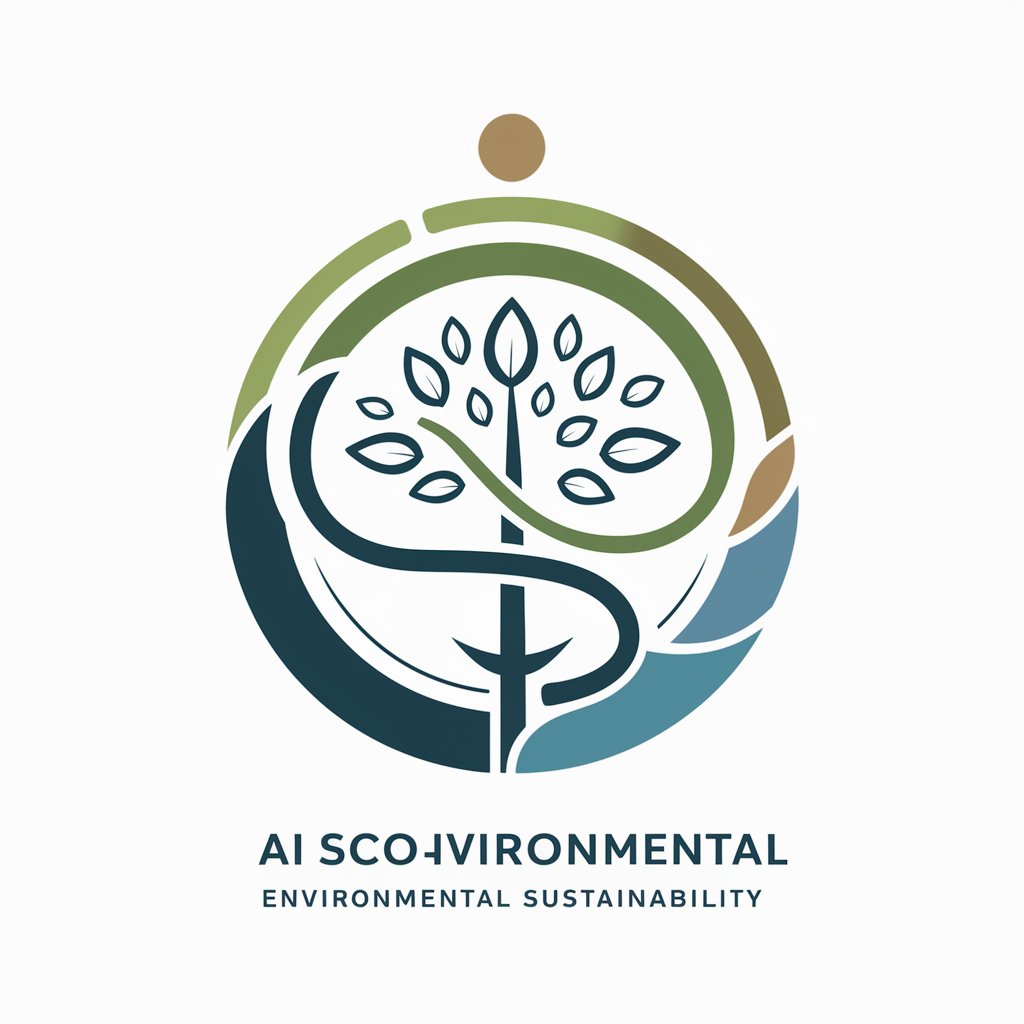Environmental sustainability - AI-driven Sustainability Insights

Empowering sustainable decisions with AI.
How can I improve my product descriptions?
What's a good headline for a fashion blog?
Get Embed Code
Understanding Environmental Sustainability
Environmental Sustainability, as embodied in this AI function, is designed to provide users with comprehensive insights, solutions, and information on maintaining ecological balance and promoting practices that reduce negative impacts on the planet. This purpose is rooted in addressing the urgent need to mitigate environmental degradation and ensure the longevity of natural resources for future generations. The design focuses on offering tailored advice, up-to-date information on sustainable practices, and innovative solutions to environmental challenges. For example, it can generate content on reducing carbon footprints, implementing renewable energy solutions, and strategies for biodiversity conservation. Such scenarios include helping businesses develop sustainability reports, advising municipalities on green infrastructure projects, or assisting educators in creating environmental curriculum materials. Powered by ChatGPT-4o。

Core Functions of Environmental Sustainability
Information and Education
Example
Providing detailed backgrounders on environmental issues like climate change, plastic pollution, or deforestation.
Scenario
An educator preparing a lesson plan on the importance of recycling and waste management can receive tailored information and statistics to enrich their curriculum.
Sustainability Strategy Development
Example
Assisting organizations in creating or refining their sustainability strategies, focusing on areas like energy efficiency, waste reduction, and ethical supply chain practices.
Scenario
A small business looking to reduce its environmental impact might use the service to develop a comprehensive plan that includes switching to renewable energy sources and minimizing waste.
Innovative Solutions for Environmental Challenges
Example
Generating ideas and proposals for tackling specific environmental issues, such as water scarcity or air pollution.
Scenario
Community leaders facing acute water shortages can find strategies for rainwater harvesting and water conservation techniques tailored to their local context.
Target User Groups for Environmental Sustainability
Educational Institutions
Schools, universities, and educational programs focusing on environmental science, sustainability, or related fields will find this AI invaluable for enhancing curriculum, facilitating research, and engaging students with current environmental issues.
Businesses and Corporations
Companies seeking to integrate sustainability into their operations, from SMEs to multinational corporations. The AI can help them develop sustainability reports, reduce environmental impacts, and comply with regulations, thus improving their brand image and operational efficiency.
Government and Non-Profit Organizations
Municipalities, government agencies, and NGOs working on environmental conservation, policy development, and community projects can utilize this AI to inform their strategies, engage stakeholders, and promote sustainable development initiatives.

How to Use Environmental Sustainability
Initial Access
Navigate to yeschat.ai to start your free trial; no sign-up or ChatGPT Plus subscription required.
Define Goals
Identify your specific needs or challenges related to environmental sustainability to tailor the tool's use effectively.
Select Features
Explore various functionalities like data analysis, trend prediction, or sustainability reporting to match your goals.
Engage with AI
Interact with the AI by asking questions or requesting analyses to gain insights into environmental sustainability.
Apply Insights
Utilize the AI-generated advice and data to implement sustainable practices or strategies in your context.
Try other advanced and practical GPTs
Environmental Governance
Empowering Sustainable Policy Solutions

MUSIC MUSIC
Compose music through AI-powered coding.

Music Matchmaker
Discover Music That Feels Right

Music Mate
Your AI-powered guide to music production excellence.

Geo Music
Discover music by your location, powered by AI.

YouPick: Music
Personalize your soundtrack with AI.

Environmental issues
Empowering Environmental Insights with AI

Environmental Conservation
Empowering sustainable actions with AI

Environmental Advisor
Empowering Sustainable Decisions with AI

Environmental Conservation
Empowering Eco-Friendly Decisions with AI

Environmental Procedure Writer
Streamline compliance with AI-powered precision
AI in Environmental Sustainability GPT
Empowering sustainability with AI insights

Environmental Sustainability Q&A
What is Environmental Sustainability?
Environmental Sustainability uses AI to analyze and predict sustainability trends, helping users make informed decisions on environmental management.
How can businesses benefit from Environmental Sustainability?
Businesses can use it for optimizing resource use, reducing carbon footprint, and achieving sustainability goals, leading to cost savings and improved brand image.
What kind of data can Environmental Sustainability analyze?
It can process environmental data, including emissions, energy consumption, waste management, and resource utilization, to provide comprehensive insights.
Can Environmental Sustainability suggest actionable strategies?
Yes, it can offer tailored recommendations for improving environmental performance and achieving sustainability targets based on data analysis.
Is Environmental Sustainability useful for policy making?
Absolutely, policymakers can leverage it to understand environmental impacts, forecast future trends, and develop effective, data-driven regulations.
